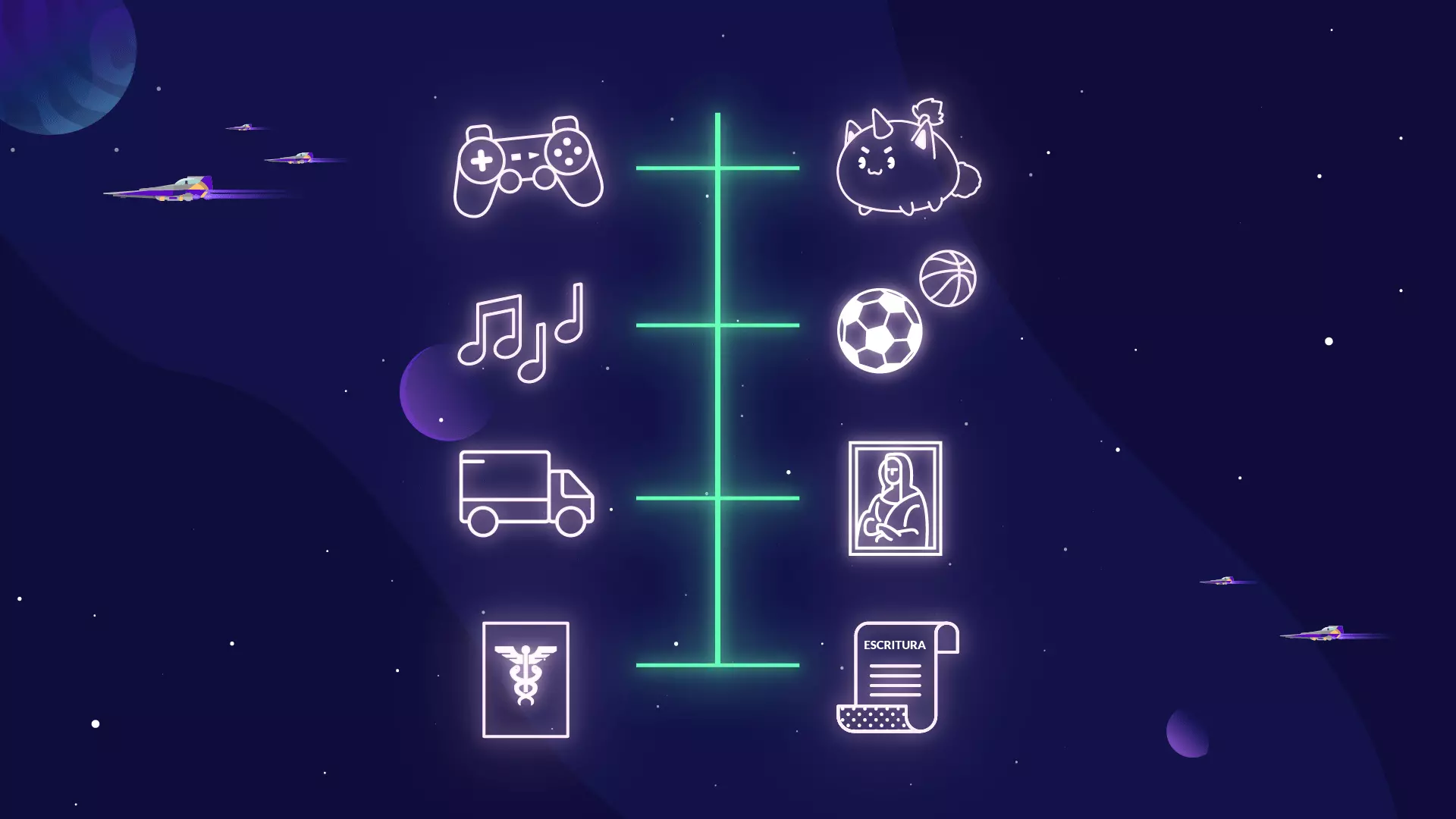What is an NFT and what differentiates them from cryptocurrencies. How it works and what is the usefulness of the NFT.


An NFT is a unique digital object, or a blockchain representation of a unique asset in the concrete world.
How does an NFT work?
Although some of them have cryptocurrency functions, in general NFTs function as collector’s items: they are tokens with unique characteristics that cannot be replaced by others, and whose value tends to increase precisely due to this scarcity.
What is the use of an NFT?
The great usefulness of an NFT is that it allows you to create unique and complete digital goods or generate tokens that represent specific physical goods and assets. This is a solution for the historical traceability of properties, for example, avoiding scams and falsifications. NFTs have great potential as an economic, commercial and even financial tool.
Currently, the most common NFT use cases are:
Creation and sale of digital assets
Digital Asset Possession Management
Authenticity guarantees for digital goods and works of art
Division of high-value assets, such as real estate (for example, with the creation of two NFTs to each represent 50% of a property)
How much is an NFT worth?
As with fungible tokens and cryptocurrencies, an NFT has value for different reasons, of which its usefulness and scarcity are usually the most important. Similarly, we can say that an NFT has different types of value. They represent a symbolic value (they are important in a certain community), a utilitarian value (they allow certain actions to be carried out on a crypto platform or protocol) and also an economic value (a price).
The first price that an NFT has is the price determined by whoever creates it. This process of creating an NFT is called minting. If it is a blockchain gaming NFT, the game developers determine the price in the initial sale. If it is a piece of crypto art, it is established by the artist when uploading his work to a marketplace.
But once an NFT is sold by its creator, it becomes part of the market and has a price that depends on that original amount, but in tension with supply and demand.
On the other hand, NFTs are not as liquid assets as cryptocurrencies and fungible tokens. It is not so easy to convert them to fiat money or cryptocurrencies: yes or yes you have to find a buyer willing to pay the price. Therefore, it is essential to understand that, unlike a bitcoin or 1000 USDT, NFTs do not represent an identifiable economic value when they are in your portfolio: they only consolidate their price when they are sold.
Difference between NFT and cryptocurrency
Cryptocurrencies are a type of tokens called fungibles. This means that they are equivalent and replaceable. The same as all the 500 peso bills, for example. If you lend 500 pesos to a family member, you do not expect them to return the same bill to you later. Any 500 peso bill is equivalent and replaces it.
The difference is that NFTs are unique, they are well differentiated and identified, and even though two have the same value and the same appearance, they are different in their content and cannot be replaced. Traditional works of art, paintings, are non-fungible: no two are the same, even making an exact replica will not be the same painting as the original, nor will it be worth the same nor will it have the same symbolic weight.
What are NFTs for?
December 15, 2021
NFT and asset tokenization. Use cases in sports, arts and video games. NFTs beyond blockchain. A gateway to the metaverse.
Non-fungible tokens are part of a larger revolution that is taking place in the crypto world and increasingly dialogue with the traditional one: tokenization, that is, the possibility that crypto allows to establish as blockchain assets both digital and digital goods and services. of the standard world.
The possibilities with tokens are many. A character in a video game can be a token, and also the prize that game gives you for winning games. But a token can also represent your house or your copyright on a song. A digital currency, as we already said, is also a token.
In this guide we focus specifically on NFTs, but we recommend reviewing these articles if you want to know more about the different types of tokens, if you want to know the differences between tokens and cryptocurrencies, or if you are interested in thoroughly understanding the distinction between fungible tokens and non-fungible tokens.

NFTs are used in video games and crypto art, but they can also represent real estate or even medical records.
NFT use cases
As we have been seeing, non-fungible tokens are rare, scarce. There are not 21 million units of an NFT, as there may be of a cryptocurrency; in this case, Bitcoin. Each NFT is unique by design and by definition.
Additionally, the identity of each NFT is tracked using a blockchain identifier, a hash that allows one non-fungible token to be differentiated from another. This functionality allows you to create unique and complete digital assets, or generate tokens that represent specific physical assets and goods.
Due to their nature, NFTs can have very important uses and applications outside the crypto core, in all cases where it is necessary to represent or assign ownership of goods, objects and services, whether digital or concrete.
The most popular use cases for NFT were given by the trend of crypto collectibles (such as CryptoPunks or CryptoKitties), the boom of play-to-earn video games (such as Axie Infinity), the increasingly massive metaverse communities (such as Decentraland) and the approach to very popular areas such as artistic expression (with musical NFTs and works of crypto art) or sports (basketball plays, collectible cards and digital art about athletes).
But keep in mind that NFT technology allows you to assign ownership, identify and differentiate any type of data package registered in the blockchain. As the crypto ecosystem advances and brings improvements in new areas, the scope of NFTs is also expanding.

